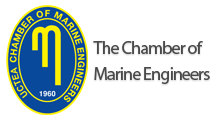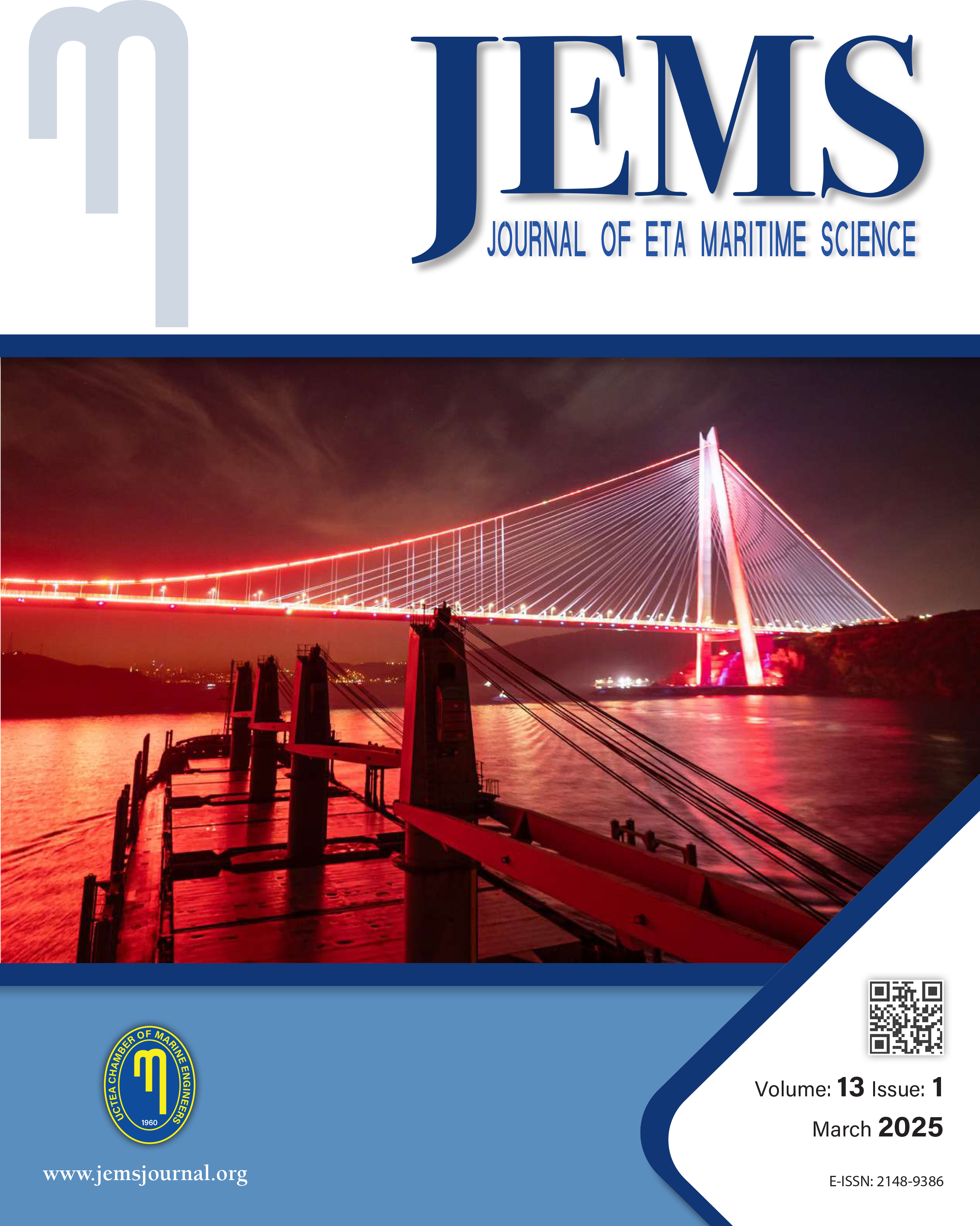

JEMS apply the Creative Commons Attribution NonCommercial 4.0 International Licence to all manuscripts to be published
ABSTRACTING & INDEXING
Volume: 10 Issue: 2 - 2022
| 1. | Full Issue Pages I - X |
| EDITORIAL (ED) | |
| 2. | Editorial Selçuk Nas doi: 10.4274/jems.2022.22964 Page 96 Abstract | |
| ORIGINAL RESEARCH (AR) | |
| 3. | Meteorological Risk Assessment Based on Fuzzy Logic Systems for Maritime İsmail Karaca, Ömer Soner, Rıdvan Saraçoğlu doi: 10.4274/jems.2022.65668 Pages 97 - 107 In recent years, numerous casualties have been associated with a lack of safe navigation of ships. Despite advanced navigation systems and the implementation of safety management systems onboard ships, maritime safety is still one of the major concerns for the shipping industry. This research proposes a proactive modeling approach that utilizes Fuzzy Logic and Adaptive Neuro-Fuzzy Inference Systems (ANFIS). The model primarily provides continuous meteorological risk assessment for ships to improve marine navigational safety. In the study, Wind Speed, Sea Conditions, Visibility, and Day/Night Ratio are converted to meteorological risk factors using meteorological risk assessment system. Supported by ANFIS, the meteorological risk assessment system has demonstrated that the database contains details of over 180 marine casualty information involving navigation and traffic accidents. The results emphasize that environmental factors, as well as the Day/Night Ratio, significantly influence ship navigational safety. Hence, a meteorological risk assessment system can enhance navigational safety and prevent loss of life in the shipping industry. As a result, a meteorological risk assessment framework has enormous potential for preventing accidents and improving the safety and sustainability of the shipping industry. In this regard, the proposed model is a one-of-a-kind framework that will be extremely useful for mitigating and preventing the effects of maritime accidents. |
| 4. | Indoor Positioning Technology Selection Using a Combined AHP and PROMETHEE Method at SEDEF Shipyard İbrahim Cil, Fahri Arisoy, Ekrem Özgürbüz, Ahmet Yunus Cil, Hilal Kılınç doi: 10.4274/jems.2022.47550 Pages 108 - 123 Shipyard 4.0 refers to the application of Industry 4.0 principles to shipyards. To keep up with the challenges, the shipyard industry, like other industries, strives to realize Shipyard 4.0 in its industry. The goal of this study is the creation of an indoor positioning system (IPS) to determine the positions of all assets in the shipyards, such as employees, welding machines, cranes, and carriers, and track their movements using an IPS. Users can use positioning systems to find and track the location of a particular object. The most well-known position tracking system is the Global Positioning System, which is widely used in determining the location and position of objects in the external environment. The GPS for locating and tracking an object indoors is not recommended for indoor use, as indoor signals transmitted from a satellite to a device are weakened by indoor obstructions. Many different IPSs are in development that track and position objects indoors. Choosing the most suitable IPS for a shipyard is a multicriteria decision problem. A combined AHP and PROMETHEE method is proposed in this study to determine which IPS technologies would be most suitable in shipyards. In the literature review, it is shown that the AHP and PROMETHEE methods are used separately or together in solving problems in many areas. However, no study has been conducted in which the AHP and PROMETHEE methods are used together for the IPS selection problem. For this purpose, an application of the proposed method in IPS selection and evaluation was carried out at the SEDEF shipyard, and the most suitable technology was determined by evaluating different IPS technology options. |
| 5. | Ship-to-ship Dialogs Using A Finite State Machine Reyes Poo Argüelles, Jesús A. García Maza, Felipe Mateos Martin doi: 10.4274/jems.2022.18853 Pages 124 - 132 Collision Avoidance Systems require correct and unambiguous application of the Convention on the International Regulations for Preventing Collisions at Sea (COLREGs). Ship-to-ship dialogs, aimed at sharing encounter data to comply with COLREGs and reaching maneuvering agreements, would help to reduce the risk of collision. Finite State Machine (FSM) is a mathematical model for describing the sequential behavior of a control program. Sequential function chart (SFC) based on FSM, is a graphical programming language for Programmable Logic Controllers, defined by the international standard IEC 61131-3. In this work, SFC language is used to model and program the set of states and transitions involved in the ship-to-ship dialogs initiated when one of them detects a risky situation. SFC facilitates the development, verification, and maintenance of the control program. The implemented ship-to-ship communications to share data will help in eliminating differences in decision-making and achieving safer encounters. An example of a risky encounter illustrates this assertion, not contemplated in the related studies consulted. The implemented dialogs will enable sharing information on the encounter characteristics and reaching agreements on the maneuvers to be performed, or maintaining a record about disagreements. |
| 6. | Probability Theory Analysis of Maritime Piracy and the Implications for Maritime Security Governance Theophilus Chinonyerem Nwokedi, Julius Anyanwu, Melvin Eko-Rapheaels, Catherine Obasi, Imorataria Dogood Akpufu, Daniel Bekesuomowei Ogola doi: 10.4274/jems.2022.37132 Pages 133 - 143 The objective of this study was to determine the empirical probability coefficients of pirate attacks on ships in various sea regions, individual ship types, and the occurrence probability scores of trauma associated with hostage-taking, injury, death, kidnap for ransom, missing, and threats to the lives of crew members effected by pirate attacks on ships. Secondary data on the frequency of pirate attacks on ships trading in various regions of the world were obtained from the International Maritime Bureau. The data covered 10 years, that is, between 2011 and 2020, and were analyzed using the empirical probability statistical method implemented with the MATLAB software. Results showed that Southeast Asian and African waters have the highest empirical probability coefficients of 0.40 and 0.39, respectively, and are most prone to pirate attacks on ships. Trauma associated with hostage-taking of the ships crew has the highest probability coefficient and likelihood of occurrence of 0.76 compared with other effects of piracy affecting the ships crew. Kidnap for ransom is second with an occurrence probability of 0.15. Chemical and product tankers have the highest likelihood of a pirate attack, with an occurrence probability of 0.26, followed by bulk carriers, crude oil tankers, container vessels, general cargo ships, LPG tankers, and trawler fishing vessels, with empirical probabilities of 0.24, 0.11, 0.11, 0.06, 0.04, and 0.02, respectively. The implications for maritime security governance were discussed. |










